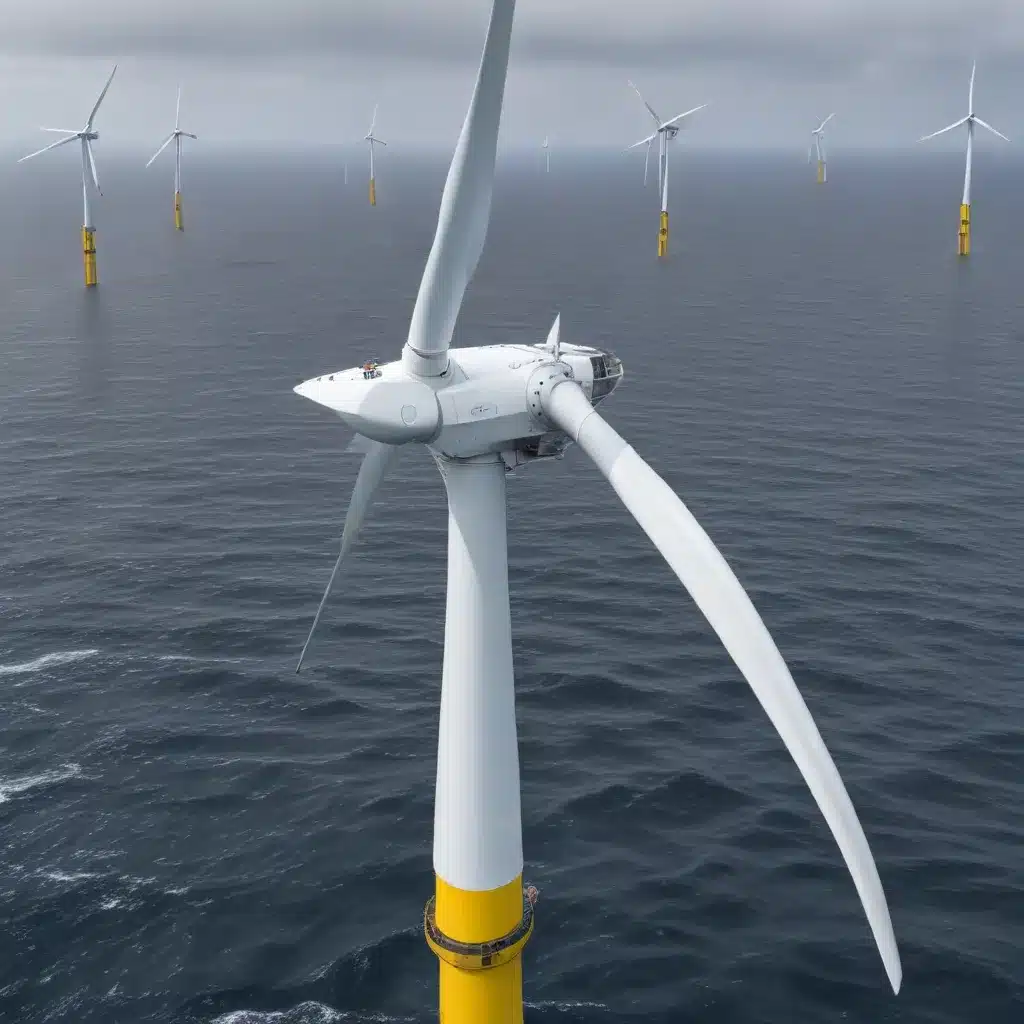
The global push for renewable energy has driven significant advancements in offshore wind power, a crucial component of Europe’s clean energy transition. As offshore wind farms continue expanding across the continent, a new frontier has emerged—the integration of artificial intelligence (AI) and robotics technologies to optimize performance, enhance operational efficiency, and minimize environmental impact.
Offshore Wind Farm Infrastructure
Offshore wind farm development involves complex engineering challenges, from the design of wind turbines to the integration of subsea power infrastructure. AI and robotics are poised to transform this landscape, offering unprecedented capabilities in areas such as turbine optimization, grid integration, and subsea cable management.
Turbine Design and Optimization
Machine learning algorithms can analyze vast datasets to identify optimal blade geometries, tower configurations, and drivetrain specifications, maximizing the energy yield of offshore wind turbines. Predictive models can also forecast maintenance needs, enabling preventive maintenance strategies that reduce downtime and extend asset lifespans.
Substation and Grid Integration
The integration of offshore wind farms into onshore power grids presents unique technical hurdles. AI-powered control systems can adaptively manage variable renewable energy inputs, ensuring grid stability and optimizing power transmission. Robotic inspection and maintenance of offshore substations and cabling further improve the reliability of these critical grid components.
Subsea Cable Management
Maintaining the complex network of undersea power cables that connect offshore wind farms to shore is a significant challenge. Autonomous underwater vehicles (AUVs) and remotely operated vehicles (ROVs) can survey cable routes, detect faults, and perform preventive and reactive maintenance, reducing the need for costly offshore interventions.
Autonomous Systems for Wind Farm Operations
Beyond the core infrastructure, AI and robotics are transforming how offshore wind farms are operated and maintained, enabling enhanced monitoring, predictive maintenance, and autonomous inspection capabilities.
Aerial Inspection and Monitoring
Unmanned aerial vehicles (UAVs) or “drones” equipped with high-resolution cameras, thermal sensors, and advanced imaging capabilities can thoroughly inspect wind turbines, substations, and other critical assets, identifying potential issues before they escalate. These autonomous systems can operate in harsh offshore environments, reducing the need for human-crewed inspections.
Underwater Robotics for Maintenance
Subsea infrastructure, such as foundations, mooring systems, and offshore substations, also require regular inspection and upkeep. Autonomous underwater vehicles (AUVs) and remotely operated vehicles (ROVs) can perform comprehensive subsea surveys, detect corrosion or damage, and even execute minor repairs, minimizing the need for costly offshore interventions.
Predictive Maintenance Strategies
By integrating sensor networks, Internet of Things (IoT) devices, and advanced data analytics, offshore wind operators can transition from reactive to predictive maintenance. Machine learning algorithms can analyze operational data, weather patterns, and equipment condition to forecast potential failures, enabling proactive maintenance scheduling and maximizing asset availability.
Data Analytics and Decision Support
The wealth of data generated by offshore wind farms presents an opportunity to leverage AI-powered analytics and decision support systems to optimize performance, mitigate risks, and drive continuous improvement.
Sensor Networks and IoT Deployment
Proliferating sensor networks and IoT devices across offshore wind farm infrastructure provide a wealth of real-time data on turbine performance, grid integration, environmental conditions, and more. Machine learning models can analyze this data to identify patterns, detect anomalies, and support informed decision-making.
Performance Optimization and Forecasting
Predictive analytics and neural networks can analyze historical data on wind speeds, power generation, and other key performance indicators to forecast future energy production, enabling more effective grid integration and energy trading strategies. These models can also identify opportunities to optimize turbine operations and maintenance schedules.
Risk Assessment and Mitigation
AI-powered risk modeling and simulation tools can help offshore wind farm operators anticipate and mitigate a range of challenges, from extreme weather events to equipment failures and environmental impacts. By integrating real-time sensor data and historical records, these systems can provide early warning of potential issues and inform proactive risk management strategies.
Robotics for Offshore Construction
Constructing and installing offshore wind farms is a complex and often hazardous endeavor. Robotics and automation are poised to revolutionize this domain, enhancing safety, efficiency, and precision throughout the entire project lifecycle.
Automated Installation and Assembly
Robotic systems can automate the installation of wind turbine components, foundation construction, and the deployment of subsea cables, reducing the need for human-operated equipment and minimizing the risk of errors or accidents in the challenging offshore environment.
Remote Inspection and Repair
Specialized climbing robots and wall-crawling systems can inspect the structural integrity of wind turbine towers and other elevated components, while underwater robots can assess the condition of subsea infrastructure. These autonomous systems can perform routine inspections and even execute minor repairs, minimizing the need for human intervention.
Offshore Logistics and Transportation
Robotics and automation can also streamline the logistics of offshore wind farm construction and maintenance, from the autonomous loading and unloading of vessels to the coordinated movement of materials and equipment. Autonomous trucks, cranes, and cargo handling systems can enhance the efficiency and safety of these critical supply chain operations.
The integration of AI and robotics technologies in the offshore wind sector is a rapidly evolving field, offering a wealth of opportunities to optimize performance, enhance operational resilience, and minimize environmental impact. As the European Union continues its drive toward a sustainable energy future, these innovative solutions will play a crucial role in unlocking the full potential of offshore wind power. To learn more, visit the European Future Energy Forum.







